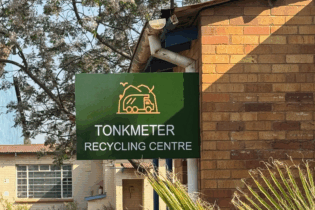
‘Advanced waste-to-energy (WTE) programmes offer municipalities and their communities’ new opportunities to create value from often overlooked sources’
Sustainability efforts and growing interest in the circular economy are driving developed and developing nations to look inward and focus on ways to conserve and make the most out of their resources. Advanced waste-to-energy (WTE) programmes offer municipalities and their communities’ new opportunities to create value from often overlooked sources.
The global push towards resource efficiency through enterprise development and innovation has become critical as countries find themselves challenged by resource scarcity concerns – while focusing on socio-economic and environmental pursuits. It is with this approach that the ability to transform everyday waste into energy is proving to be vital.
WTE projects have demonstrated tangible benefits for the environment and the ability to provide reliable and renewable power to communities, as well as facilitating reuse and recycling of resources; transforming a waste management problem into job creation and economic development. This combination of factors has boosted interest in WTE development – making it a key option for facilitating the circular economy, with nations recognising they can capitalise on waste reuse with concurrent benefits in reduced landfill requirements.
An emerging market
Although the WTE market has been developing for many years, the industry has grappled with some challenges and scepticism – mostly on the technology and costs involved.
Years of progress in improving conversion technology efficiency with reduced emissions, in combination with, improved waste processing for integrated recycling and energy integration, have worked to address historical obstacles to transforming waste into energy successfully. The added bonus of reducing greenhouse gas emissions by limiting methane production in landfills has also spurred increased interest in WTE deployment in African countries. According to The World Energy Council’s World Energy Resources 2016 report, the global WTE market is expected to grow into a USD36-billion industry by 2020.
WTE is likely to be a major market-in-the-making for many African countries due to the waste generation and increasing scarcity of land available for landfills in growing urban areas in the developing world. WTE can also be critical to providing power in countries with underdeveloped energy systems, particularly in urban areas with mounting demand, while adding the socio-economic benefits of job creation.
With the production of waste projected to hit 11-million tonnes per day globally, sub-Saharan Africa has been identified as one of the regions where WTE applications can be most beneficial due to projected population and economic growth, according to
The World Energy Council.
There are already a few projects underway. For example, in the latter part of 2016, engineering, procurement and construction firm Black & Veatch partnered with local entity, MBHE African Power, on a WTE plant near Drakenstein Municipality in the Western Cape. When operational, it will contribute 10 MW to South Africa’s power grid, powering more than 10 000 South African homes.
In Ethiopia, a 50 MW WTE facility is being developed just outside of Addis Ababa. Slated to be commissioned in July, the plant is expected to power up to 30% of the city’s households and fulfil the country’s climate resilience aspirations. The plant will be the first operational WTE project on the African continent.
Capital investment challenges, however, must be overcome to drive widespread adoption of WTE projects.
Currently, the most viable way to finance projects are through public-private partnerships (PPPs). However, to date, funding has been driven largely by the private sector as supply and contribution to the grid is standardised in its transmission. Other project costs for WTE plants may vary due to emission requirements, grant stipulations for equipment sourcing, labour costs and productivity, equipment and reliability requirements. Greater collaboration between industry and the private sector, as well as detailed planning, can ensure adequate funding for projects and form mutually beneficial PPP models.
Future of WTE
WTE projects convert waste sustainably and are ideal power solutions to address population growth across Africa. When properly planned, WTE projects also offer a viable alternative to municipalities grappling with waste management challenges and the need for job creation and economic development. In the bigger scheme of things, WTE has come a long way in alleviating waste management challenges while providing sustainable energy to meet emerging socio-economic and environmental demands and is only expecting to advance further.
* Webb Meko is the business development director for Sub-Saharan Africa at engineering, procurement and construction firm, Black & Veatch








